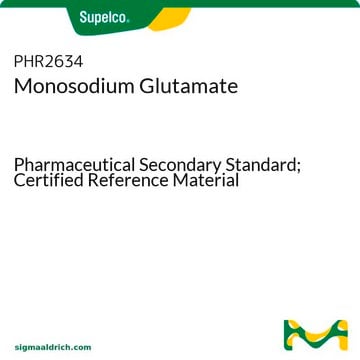03835
γ-Aminobutyric acid
analytical standard
Sinónimos:
3-Carboxypropylamine, 4-Aminobutanoic acid, GABA, Piperidic acid, Piperidinic acid
About This Item
Productos recomendados
grado
analytical standard
Nivel de calidad
Análisis
≥97.0% (HPLC)
caducidad
limited shelf life, expiry date on the label
clases químicas de analitos
amino acids, peptides, proteins
técnicas
HPLC: suitable
impurezas
≤1.0% water
mp
195 °C (dec.) (lit.)
aplicaciones
cleaning products
cosmetics
flavors and fragrances
food and beverages
personal care
formato
neat
cadena SMILES
NCCCC(O)=O
InChI
1S/C4H9NO2/c5-3-1-2-4(6)7/h1-3,5H2,(H,6,7)
Clave InChI
BTCSSZJGUNDROE-UHFFFAOYSA-N
¿Está buscando productos similares? Visita Guía de comparación de productos
Descripción general
Acciones bioquímicas o fisiológicas
Código de clase de almacenamiento
11 - Combustible Solids
Clase de riesgo para el agua (WGK)
WGK 3
Punto de inflamabilidad (°F)
Not applicable
Punto de inflamabilidad (°C)
Not applicable
Choose from one of the most recent versions:
¿Ya tiene este producto?
Encuentre la documentación para los productos que ha comprado recientemente en la Biblioteca de documentos.
Los clientes también vieron
Nuestro equipo de científicos tiene experiencia en todas las áreas de investigación: Ciencias de la vida, Ciencia de los materiales, Síntesis química, Cromatografía, Analítica y muchas otras.
Póngase en contacto con el Servicio técnico








